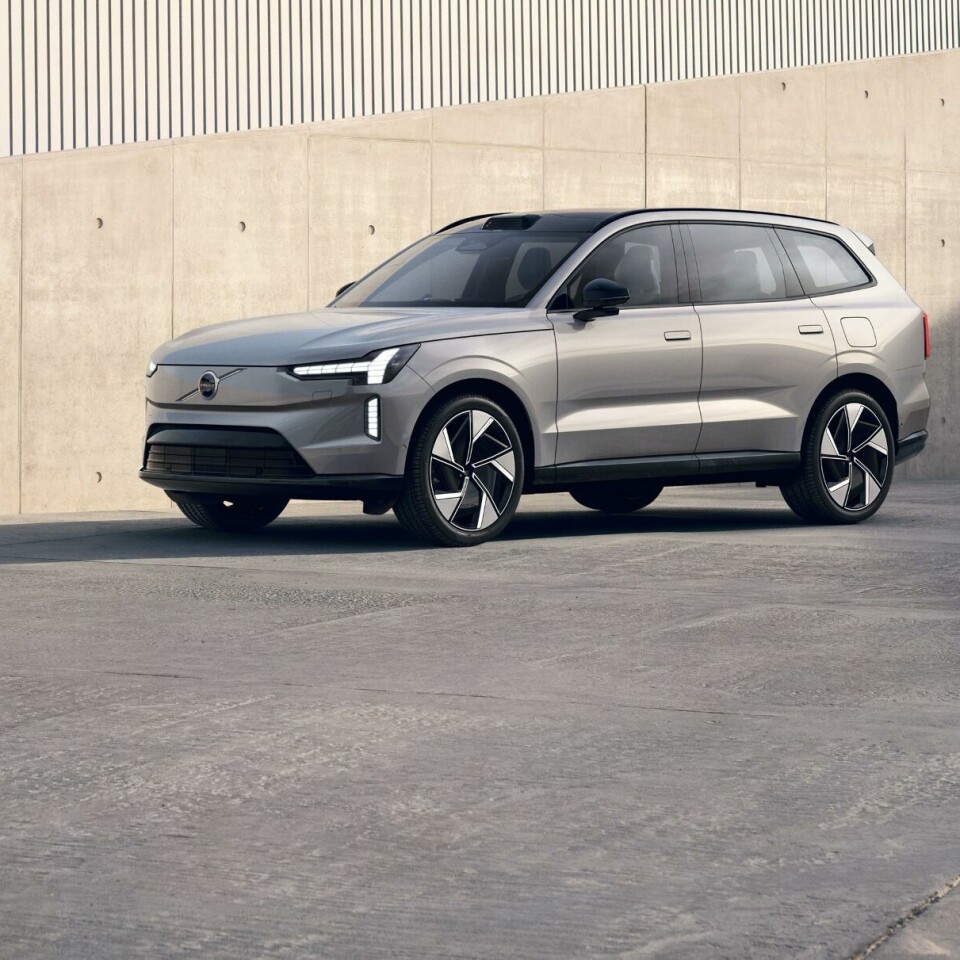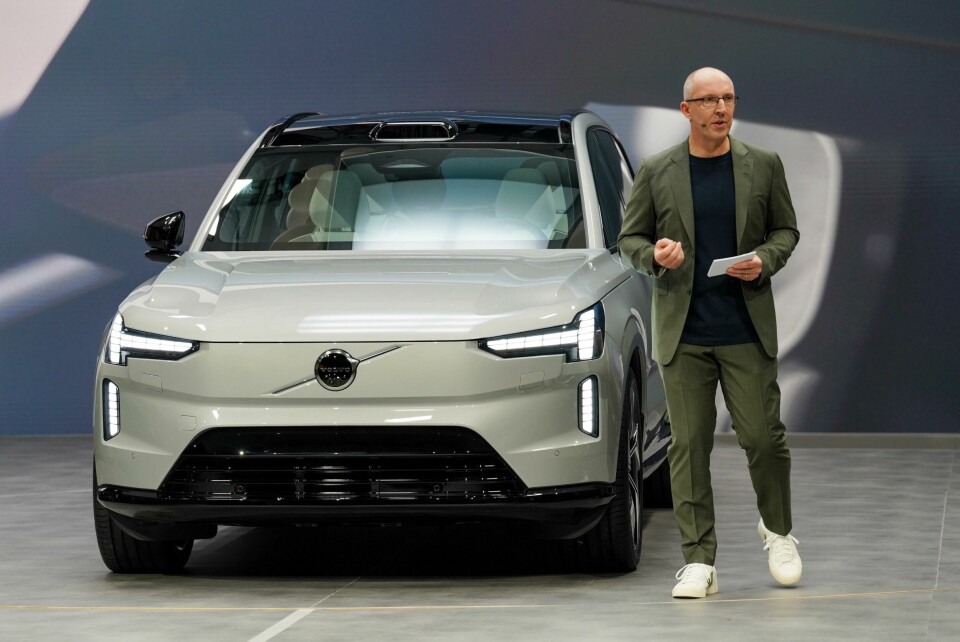
Volvo promises purity and honesty in new EX90 SUV
Volvo has revealed its flagship electric SUV, the EX90 and Mark Smyth spoke to senior members of the design team to understand its new design language
Volvo has evolved its interpretation of Scandinavian design in its new flagship model, the EX90. Along with a new platform that’s shared with the Polestar 3 and new technology and materials, the seven-seater premium electric SUV features a new design language. Robin Page, Volvo’s global head of design and UX, describes the EX90 as “Scandinavian design and the latest technology in perfect harmony.”
In order to better understand what that means, we spoke to senior members of Volvo’s design team, including the head of exterior design, T. Jon Mayer. He says the design has been guided in the main by nature’s ‘golden ratio’, but also by influences from the world of yacht design and Volvo’s history, as well as current models like the XC40 Recharge and C40.

The exterior design is all about being confident, sophisticated and seamless he says. Confident is most apparent at the front, where the grille has been replaced for the electric flagship by what the design team calls a “shield.”
It’s flanked on either side by one of Mayer’s favourite parts of the new design, the revised Thor’s hammer signature lights. They look familiar in daylight, but at night the running lights split horizontally to open up and reveal the LED headlights. This operation forms part of the vehicle’s welcome sequence and can also be used to greet your friends.
“We looked at our cars on the road today, and at nighttime when you have the high beam or low beam on the message is diluted a little bit,” he says. “The brief to the team was how do we make Thor’s hammer equally powerful during the day and at night and the team came up with the solution of an opening hammer.”
At Volvo we have always been more inspired by interior architecture and fashion than many other brands
It’s also about giving the EX90 personality, something that reflects the warmth and confidence of the Scandinavian people and conveys the perception of being closer to nature than to the technology of something like a robot. All of this is in a frontal area that has been sculpted by the principles of aerodynamics, more so than any other Volvo SUV.
“We said our form language should really follow function, so we’ve rounded off the front end in principle in both profile and plan view to hit the air at the best airflow from the beginning,” he says. “The other elements of flush fit and finish include flush door handles down the side of the car and flush glazing on the windows.”
Here Mayer says there is a level of elegance, with two new upper and lower lines that will add to the customer perception of premium fit and finish. That’s true at the rear too where there are new vertical taillights, a continuation of a design element that exists on the compact Volvo C40 and which Mayer hopes will become as much of a signature item as Thor’s hammer.
Typical of most Volvos, the strongest evidence of Scandinavian design is very much on the inside, where elegant natural woods that now feature design lighting are integrated with cool metals and a range of sustainable materials.
This includes a new Nordico trim made from a combination of recycled plastic and wood from responsibly-managed forests. There’s plenty of tech too, including the largest central infotainment screen that Volvo has ever used at 14.5 inches. It provides access to a world of tech, including Unreal Engine’s visualisation tools for the screens and head-up display. There are new jewellery items using metal and glass, continuing to stick to the original brief of an air of sophistication. Then there are the materials and here the designers have chosen to have more control over the colour and trim combinations.
Marie Stark, programme design manager for the EX90 says that buyers used to be able to personalise their interiors through colour and trim choices, but in the new model it is the designers who put together the perfect match to contribute to what she refers to as a living room feeling.
“Before, the customer was open to mix and match nearly everything and we don’t think that’s the future,” she says. “Instead, we are giving a look that we think fits your tastes, but with different tonalities from elegant, classic and calm to dynamic and sporty. It’s different, but more that we as designers can really direct what we think are the perfect fits.”
Our values come through even more in this car
This isn’t just about taking control of the interior design choices, but about utilising the expertise within the team to give owners the best interior possible, one that has been perfected over months, even years of deliberation. It is about providing the right Volvo values through the interior design choices, says Cecila Stark, senior design manager for colour, material and vision. “The whole industry is changing and we are different in Volvo, we have always been more inspired by interior architecture and fashion than many other brands and we show that and we want to strengthen it more and more,” she says. “Our values come through even more in this car.”
One of the most well-known values of Volvo is of course safety and today that typically means technology rather than the perception of solidity of Volvos gone by. One of the main tech features in the EX90 is the lidar sensor, but it’s also the element that provided the biggest challenge for Mayer and his team. The ideal place from a design prospective might have been behind the shield at the front, but Mayer says that the engineering department disagreed, even pointing out that a giraffe doesn’t have its eyes on its knees – they are high up to give it clear visibility ahead.
There was only one place for it then, the roof, and so Mayer and the team set to work incorporating it into the design. “We see this as a sign of 21st century automotive safety, much like our three-point safety belt was in the last century, but its purpose is to see,” he says. “It’s up high, it can see above the car in front of you up to 250 metres during daytime, nighttime and at highway speeds. It has a point and that’s form following function.”
In order to integrate the lidar sensor, the team designed a cover in a teardrop shape that allows the air to flow over it and then pass over a release edge before re-attaching to the roof. It’s another symbol of the aerodynamics needed to help the EX90 achieve a claimed driving range of up to 600km from its twin electric motors and 111kWh battery pack.
Whatever the tech or the choice of interior materials, the team keep referring back to the principles of Scandinavian design, of form follows function, of purity, honesty and proportion. These all translate into a vehicle that continues the lineage of the XC90 but in a very different way, a way which Volvo is confident will lead it into a new era of technology and design.






















